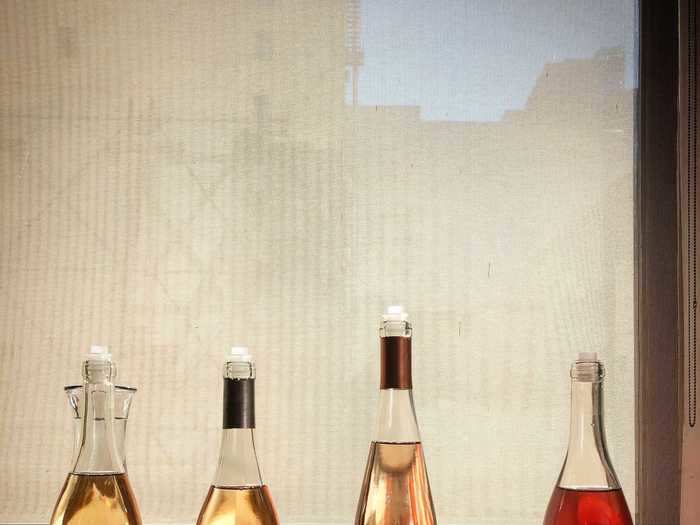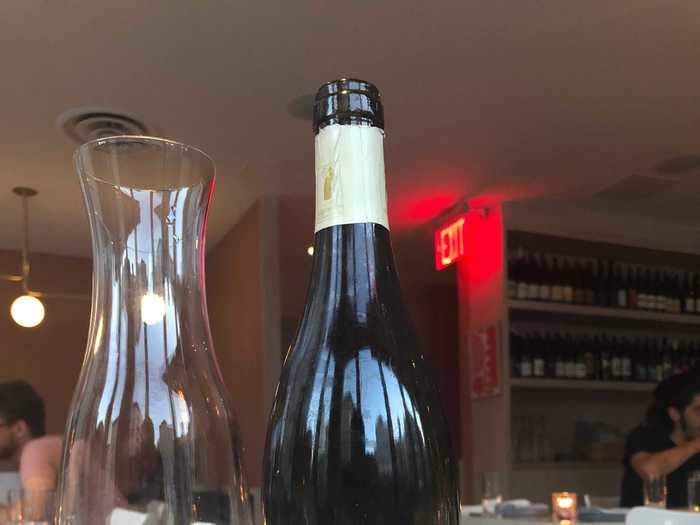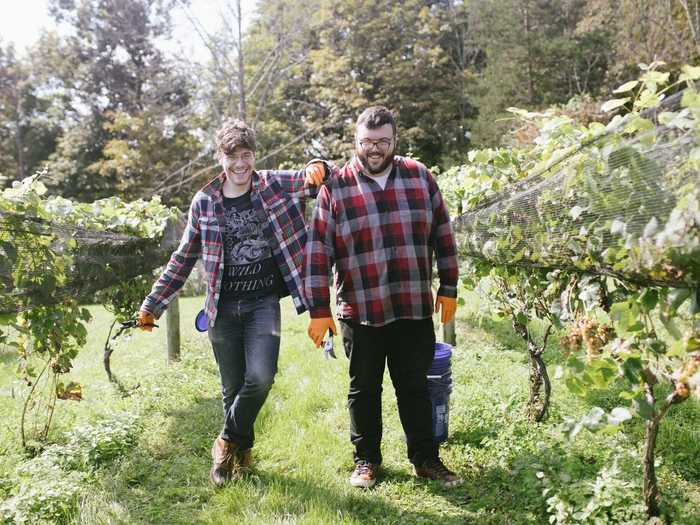Kevin Diamond enjoys a glass of wine on a rainy day in La Rioja, Spain.Credit: Bonney Rowley
- Kevin Diamond is a sales representative for a New York-based wine importer and distributor, and the cocreator of comedy wine podcast, Disgorgeous.
- Although most restaurants and bars have shuttered due to COVID-19, Diamond says there are still plenty of ways to get your wine fix from home.
- Diamond encourages supporting local businesses by ordering a bottle with dinner delivery from your favorite nearby bar or restaurant.
- He also suggests different wine regions for three varieties that can be surprisingly affordable: Muscadet, Rosé, and Côtes Catalanes.
- Visit Business Insider's homepage for more stories.
Six months ago, I was a Brooklyn-based wine salesman, helping restaurants and shops across the five boroughs as they crafted their booze selection. Now in the age of the pandemic, I'm advising restaurants a lot less, and advising friends a lot more on which bottles they should be choosing for surviving and making the most of their quarantine lockdowns.
I've long had a few principles I've imparted to friends who are interested in how to buy — and more importantly, enjoy — wine at home. Because the truth is, if the wine isn't bringing you joy, you really should just be drinking light beer or margaritas. These principles are just as true now, if not more so, than they were before.
Read the original article on
Business Insider
Muscadet, Rosé, and Côtes Catalanes
Assorted rosés from California.
Credit: Kevin Diamond
MuscadetMuscadet is best known as a young, fresh, salty wine often served with oysters, and these bottles can bring a lot of joy, often for less than $20. But you can also find some hidden gems here: Older vintage Muscadet made by some of the masters (Pépiére, Luneau-Papin, Jo Landron) will begin to drink like Chablis for at least half the price.
Rosé (really)Many people think of the Whispering Angels of the world when it comes to rosé: something, light, pale-salmon in color, with little taste, served teeth-shatteringly cold. If you like this, I have some news for you: What you really want is a vodka soda. You're welcome.
But there is so much fun to be had with rosé. Look for bottles that are darker in color then you might expect, maybe from the teutonic region in Germany or Austria, the Loire Valley in France, or the Sierra Foothills in California. These roses will showcase more minerality and a darker fruit profile then their Provencal cousins.
Côtes Catalanes
Finally, I've been getting a lot of joy out of wines in the Cotes Catalan. I'll skip the history lesson for now, but we're talking about the south of France, almost Catalonia (home of Barcelona and lingering a vibrant separatist movement) and a climate much different than the rest of France. Grape-wise, we're talking about Syrah, Grenache, Mouvedre, Cinsault, and Carignan, and there's a small but growing movement of organic-minded Natural wine makers (Matassa, Clos du Rouge Gorge) who are bringing this undervalued region new attention. Be prepared for whites with a bit of skin contact, and reds that are best served with a light chill on them.
Kevin Diamond is a sales representative for wine importer and distributor T. Edward Wines based in TriBeCa. He is also one half of the podcast Disgorgeous, an irreverent and self-described leftist comedy wine podcast. His favorite grape is Cabernet Franc.
Tip 2: Value isn't a dirty word
Kevin Diamond takes a break on a foggy morning in Hudson Valley while helping with the harvest for Wild Arc Farms.
Credit: Emma McDonald
It's not lost on me that a secondary pressure these days is finding joy in your bottle of wine while also minding how much money is flying out of the piggy bank. This doesn't mean you should resort to buying mass-produced garbage, but it does mean turning to regions other than Burgundy or Napa to satisfy your tastes. Here are a few wine regions you can turn to for exciting wine that won't break the bank.
Tip 1: Let a professional be your guide (or, don't buy wine from Trader Joe's)
Muscadet.
Credit: Kevin Diamond
The first thing I recommend is to find a local shop you love, and listen to the experts who work there. That's harder in a no-contact pick-up world, but not impossible.
Here's a workaround: Say you're buying six to 12 bottles at a time to reduce the number of trips you're taking. Start by picking four or five of your favorites and ask for a blind recommendation for the rest. They'll already have an idea of how you drink from the first handful you've chosen, and a good idea of what your budget is. As an added bonus, this will allow them a chance to flex their wine-brains, something I'm sure they'd love the opportunity to do right now.
Also, with wine and cocktail delivery exploding — because restaurants need to offer it to have any chance of surviving in this brutal environment — there's a great opportunity to take advantage of your favorite wine director's brain as well. Think of a bar or restaurant you frequented in the before times, and see if they've posted their wine list online. Next time you're grabbing pick-up or ordering delivery from them, throw a bottle or two into your cart. You may find something new that piques your interest, and the wine has most likely been chosen because it plays well with the food.
Let's get this out of the way: Don't listen to people like me if you don't want to
Kevin Diamond, right, and his podcast cohost John McCarroll help with the harvest at Wild Arc Farms in the Hudson Valley.
Credit: Emma McDonald
Look, I'm a wine professional, and as such, I love nothing more than to get lost in minute details about soil composition and microclimate. But the truth is, wine should make you happy, and if that means ordering a case of Malbec and drinking the same bottle every night, please do that.




